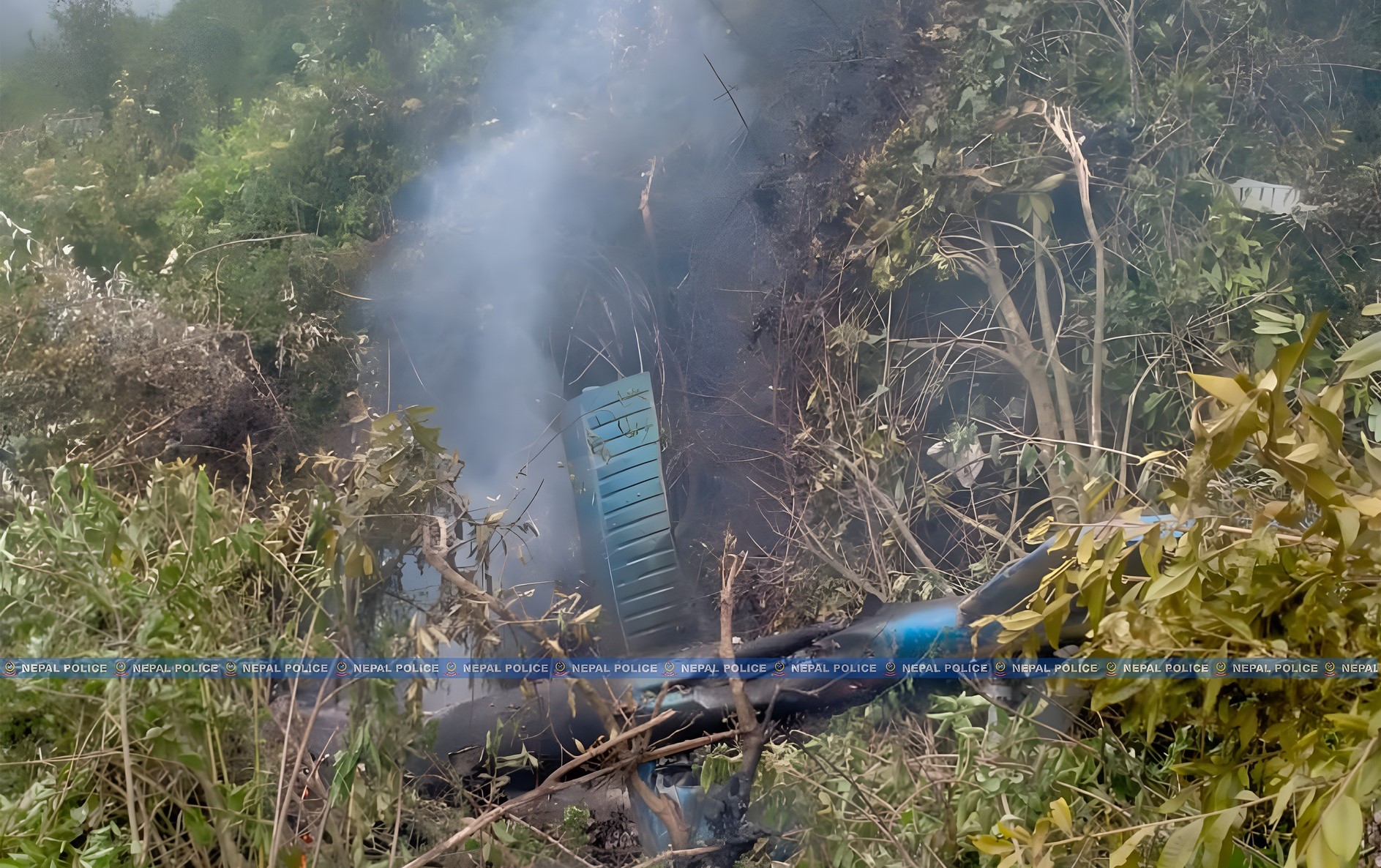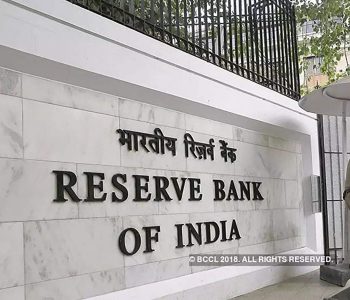Air Dynasty helicopter crash: A failure in emergency response and aviation safety

KATHMANDU: On Wednesday, the tragic crash of an Air Dynasty helicopter near Kathmandu has brought to light significant lapses in Nepal’s aviation safety and emergency response mechanisms. The helicopter, with the callsign 9N-AJD, took off from Tribhuvan International Airport (TIA) at 1:54 PM, en route to Syafrubesi in Rasuwa.
Just three minutes after departure, contact with Kathmandu Tower was lost, and the helicopter crashed at Surya Chaur-7, Shivapuri Rural Municipality, Nuwakot, killing all five people on board, including one Nepali and four Chinese nationals.
Delay in Rescue Operations
The most glaring issue in the aftermath of this incident was the inexplicable delay in launching a rescue operation. Despite losing contact three minutes into the flight, it took nearly 45 minutes for another helicopter from Prabhu Helicoptor to be dispatched for search operations. In aviation, the first few minutes after an aircraft loses contact are critical.
Standard protocols dictate that immediate search and rescue operations should commence within minutes of such an event. The delay in this instance raises serious questions about the efficiency and preparedness of Nepal’s aviation safety mechanisms.
Subash Jha, spokesperson for Tribhuvan International Airport, defended the delay by stating that the period was used for consultation and information gathering. “It cannot be termed a delay,” Jha told Fiscal Nepal. “Sometimes communication is not clear when flying in mountainous regions, so a waiting period is also necessary.”
While this explanation holds some validity, the extent of the delay remains unjustifiable, especially given the known challenges of Nepal’s mountainous terrain, which should prompt a more immediate response rather than a more prolonged waiting period.
Systemic Failures in Emergency Response
Typically, the Rescue Coordination Center at Tribhuvan International Airport should be equipped with automatic alert mechanisms, including the Emergency Locator Transmitter (ELT), which helps pinpoint the last known location of an aircraft. This system is crucial for initiating prompt search and rescue operations.
However, in this incident, the inefficiency of the center was evident. The failure to promptly locate and respond to the crash site within the 20 nautical mile radius of Kathmandu airport reflects poorly on the preparedness and functionality of Nepal’s aviation safety systems.
The inadequacy of Nepal’s emergency response mechanisms was further highlighted by recent incidents. Two years ago, the ELT successfully located the crash site of a Tara Air flight to Jomsom. In stark contrast, the current situation displayed a significant gap in effective response.
The crash of a Saurya Airlines aircraft at the edge of Kathmandu Airport two weeks ago, which resulted in substantial human loss, further underscores the pressing need for improvements in Nepal’s emergency response protocols.
Historical Context and Repeated Failures
The Air Dynasty helicopter crash marks the 41st significant helicopter accident in Nepal’s aviation history. The most recent prior incident occurred on October 13, 2023, involving a Manang Air helicopter in Lobuche, Solukhumbu.
Nepal’s first recorded helicopter crash was on December 27, 1979, during a VIP flight in Langtang, killing six people. The deadliest helicopter accident occurred on September 23, 2006, in Taplejung, claiming 24 lives. This pattern of frequent aviation accidents highlights a long-standing issue within Nepal’s aviation industry.
Despite these repeated tragedies, the government’s response has remained largely reactive and insufficient. The formation of temporary commissions to investigate each incident has become a routine practice, but these short-term measures fail to address the systemic issues that contribute to such accidents.
The lack of a permanent and continuously operating mechanism for accident investigation and aviation safety improvement is a significant oversight that needs immediate rectification.
Government Response and Accountability
In response to the latest crash, the cabinet convened an emergency meeting on Wednesday, forming an investigative committee led by Nepal Army’s senior pilot Subash Thapa, with Bishnu Basnet and Tanuja Pokharel as members.
The committee has been given 30 days to complete its investigation. While this step is necessary, it is far from sufficient. The practice of forming temporary committees to investigate crashes within a short period has long been criticized for its ineffectiveness in delivering lasting solutions.
Government spokesperson Prithvi Subba Gurung’s announcement of the committee’s formation does little to assuage the growing concerns about aviation safety in Nepal.
The government’s tendency to engage in procedural formalities rather than implementing substantive changes has led to a continued cycle of accidents and inadequate responses. The failure to establish a permanent, well-funded, and empowered aviation safety body is a glaring omission that the government must address urgently.
The Need for Comprehensive Reform
The recurring nature of these aviation tragedies calls for comprehensive reform in Nepal’s aviation sector. Key areas requiring immediate attention include:
1. Strengthening Emergency Response Systems: Upgrading the Rescue Coordination Center with state-of-the-art technology and ensuring that ELT systems are fully functional and integrated into all aircraft operating within Nepal’s airspace.
2. Training and Preparedness: Implementing rigorous training programs for air traffic controllers, rescue personnel, and aviation staff to ensure they are well-prepared to handle emergencies efficiently and effectively.
3. Permanent Investigation Bodies: Establishing a permanent, independent aviation safety investigation authority with the mandate to conduct thorough investigations, recommend safety improvements, and monitor the implementation of these recommendations.
4. Infrastructure and Technology Upgrades: Investing in advanced navigation and communication technologies to mitigate the challenges posed by Nepal’s mountainous terrain and ensure better tracking and coordination of flights.
5. Regulatory Oversight: Enhancing the regulatory framework to ensure strict compliance with international aviation safety standards and practices, and holding airlines accountable for lapses in safety measures.
6. Public Transparency and Accountability: Ensuring that the findings of all aviation accident investigations are made public and that there is accountability for implementing recommended safety improvements.
The Air Dynasty helicopter crash is a tragic reminder of the urgent need for systemic changes in Nepal’s aviation safety protocols. While immediate actions, such as the formation of investigative committees, are necessary, they are not sufficient to address the underlying issues.
Comprehensive and sustained reforms are essential to prevent future tragedies and ensure the safety of passengers and crew in Nepal’s skies. The government must take decisive steps to overhaul the current system, prioritize aviation safety, and restore public confidence in Nepal’s aviation industry.














Facebook Comment